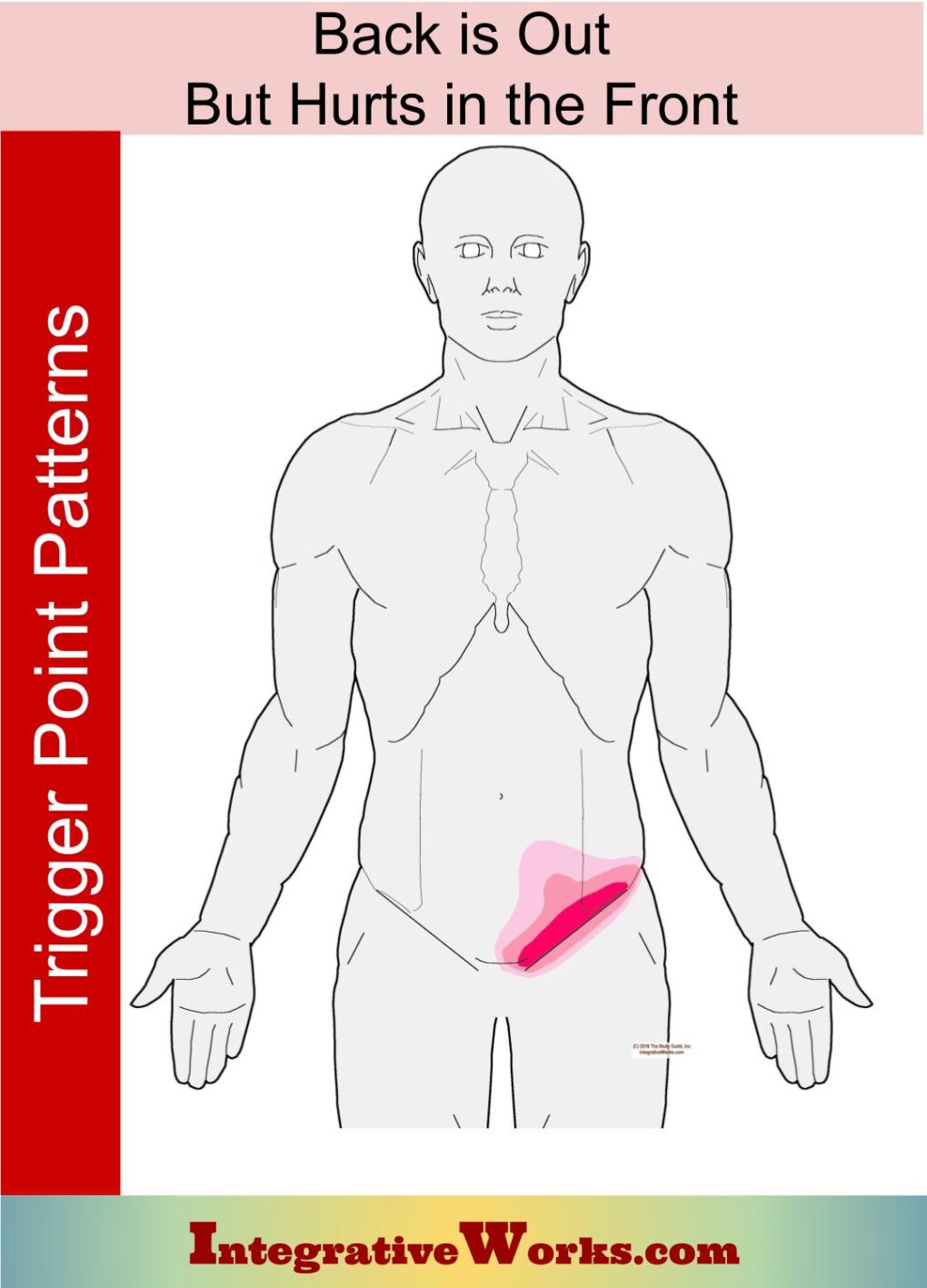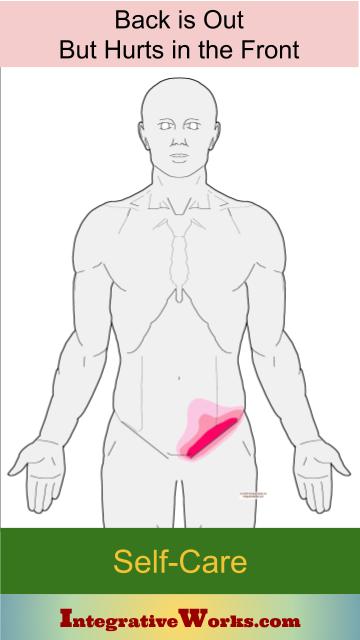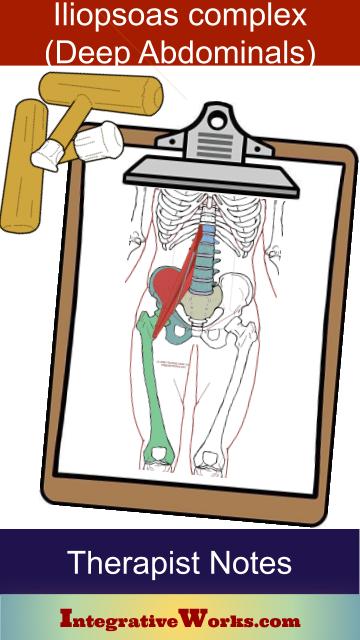Table of Contents
- How People Describe This Pain Pattern
- How You Activate and Intensify This Pain Pattern
- Self-Care – Getting Relief on Your Own
- Musculoskeletal Anatomy Behind Your Pain
- Therapy Notes for Massage and Bodywork
Want to skip ahead?
Here’s a link to my post about
getting relief on your own.
How People Describe This Pain Pattern
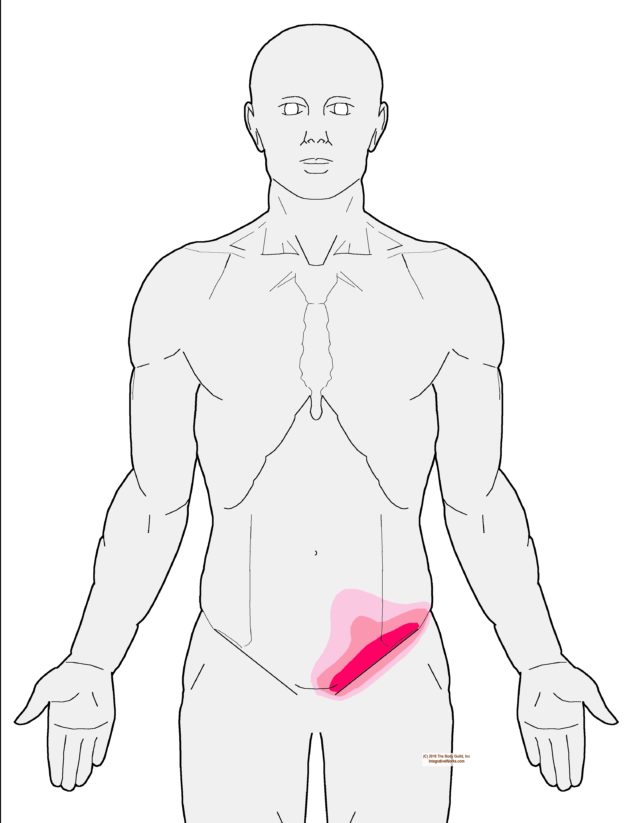
People complain of a stiff and/or painful back, but it is most painful near the fold of the hip in the front. They move stiffly and tend to have other back problems. The low back has flattened, sometimes on just one side. As well, they may or may not have back pain that feels sharp and fragile. On the other hand, they may have concern that they will move in a way that makes their back “go out.”
Many of the cases that I’ve seen have already been to a doctor for an ultra-sound or cat scan without notable problems in the radiology report.
The cases that I’ve seen fall into one extreme or the other. They are either young and very athletic or older and notably overweight. Both of these postures create an imbalance between the deep abdominals and the superficial abdominals. On the one hand, studies showed this as being most common in teenage female soccer players with very tight abdominals. As well, I have also seen this in overweight people with a tight, bloated abdomen.
How You Activate and Intensify This Pain Pattern
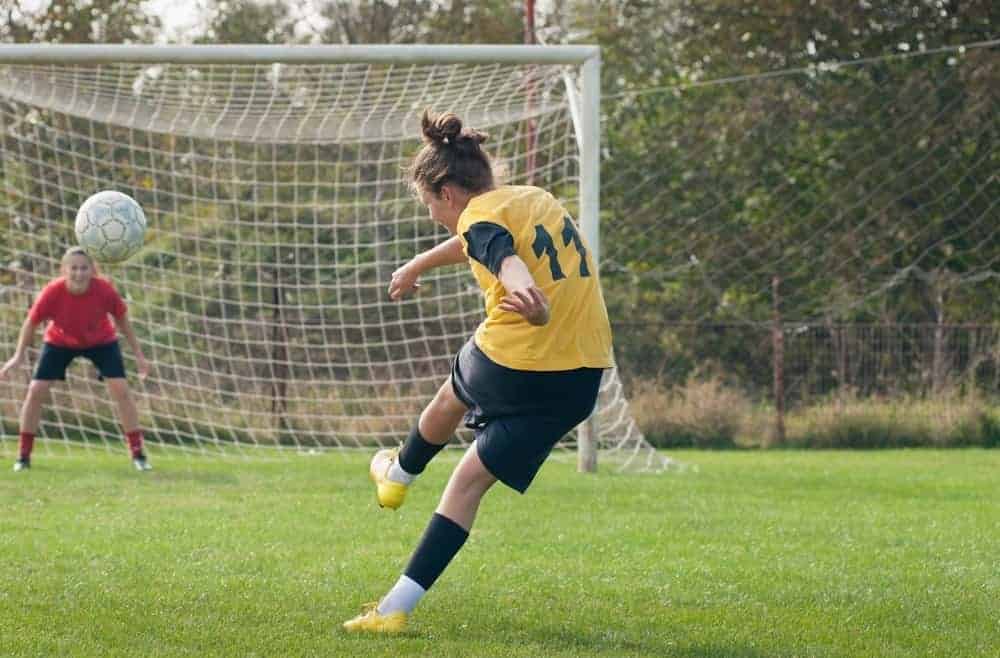
This is usually one of those problems that stem from a chronic imbalance, which was bumped into an acute condition. The younger, athletic client usually has a very tight, flat abdomen or very extended abdominal muscles from bloating.
If they can associate an activity that started the problem, it pulls the pelvis forward on one side. Clients have reported that this started after activities like kicking a ball, sex, and slipping on ice. In older, overweight clients, this is harder to pinpoint.
The Musculoskeletal Anatomy Behind Your Pain
Musculoskeletal Anatomy
Psoas Minor
This muscle is highly variable based on race, gender and even varies from side to side in the same person. You can learn more in this post on the anatomy of psoas minor.
Getting Relief on Your Own
Clinically Proven
Self-Care Strategies
This post has strategies for getting relief on your own. Explore how to change your activities, stretch, and other strategies that relieve the pain associated with this trigger point.
Therapy Notes for Massage and Bodywork
Better Bodywork
Through Shared Expertise
This post has techniques, tips, treatment routines, and anatomy illustrations to improve the bodyworker’s approach.
Support Integrative Works to
stay independent
and produce great content.
You can subscribe to our community on Patreon. You will get links to free content and access to exclusive content not seen on this site. In addition, we will be posting anatomy illustrations, treatment notes, and sections from our manuals not found on this site. Thank you so much for being so supportive.
Cranio Cradle Cup
This mug has classic, colorful illustrations of the craniosacral system and vault hold #3. It makes a great gift and conversation piece.
Tony Preston has a practice in Atlanta, Georgia, where he sees clients. He has written materials and instructed classes since the mid-90s. This includes anatomy, trigger points, cranial, and neuromuscular.
Question? Comment? Typo?
integrativeworks@gmail.com
Interested in a session with Tony?
Call 404-226-1363
Follow us on Instagram

*This site is undergoing significant changes. We are reformatting and expanding the posts to make them easier to read. The result will also be more accessible and include more patterns with better self-care. Meanwhile, there may be formatting, content presentation, and readability inconsistencies. Until we get older posts updated, please excuse our mess.


